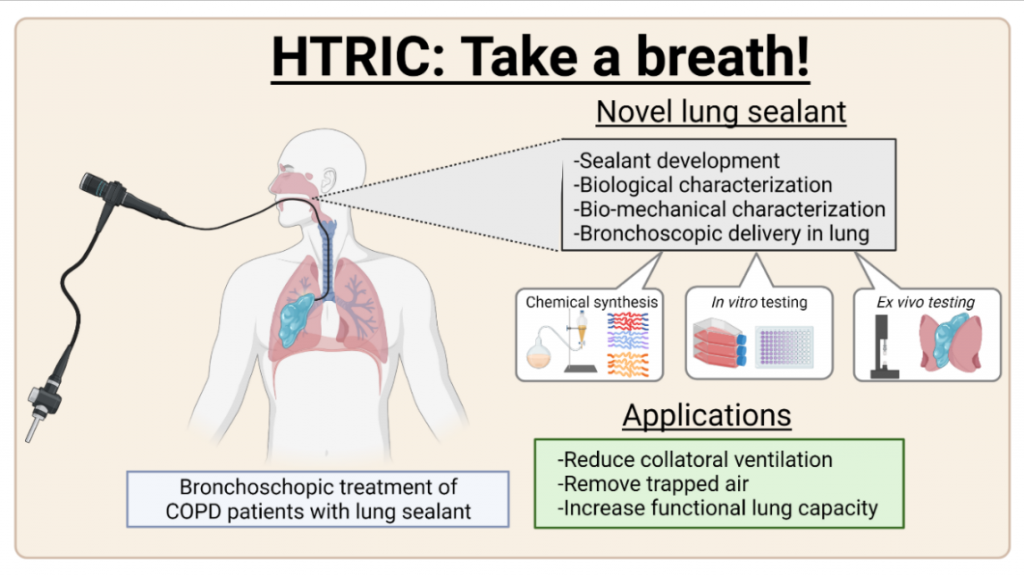Take a breath: development of a novel lung adhesive sealant as bronchoscopic lung volume reduction treatment for severe COPD patients
Chronic Obstructive Pulmonary Disease (COPD) is a severe and progressive lung disease, accounting for significant morbidity, early mortality and high healthcare costs. To date, COPD is incurable and treatment is mainly focused on reducing symptoms. Air trapped in destroyed emphysematous hyperinflated lung areas contributes extensively to the reduced functional capacity of the lungs of COPD patients. Reducing the volume of hyperinflated emphysematous areas by sealants has the potential to dramatically improve functional lung capacity. However, deep tissue bonding of sealants in the lung remains challenging because of the wet and dynamic environment, and high-performance sealants have yet to meet the demands of (1) strong adhesion and cohesion; (2) controlled and precise delivery; (3) biocompatibility; and (4) being non-degradable by the human body. Based on recent promising developments in coacervate-based wet adhesives, in this project a fully synthetic, in-situ setting sealant will be developed that can fill, seal-off and shrink hyper-inflated lung areas.

With the HTRIC grant a PhD student will be hired to develop, characterize and optimize the delivery of a fully synthetic one-component sealant for a minimally invasive, bronchoscopic application in hyperinflated lung areas to provide an immediate increase in functional lung capacity for COPD patients.
Research team:
Simon D. Pouwels Department of Pulmonology, UMCG
Marleen Kamperman, Zernike Institute for Advanced Materials, FSE
Dirk-Jan Slebos, Department of Pulmonology, UMCG
Janette Burgess, Department of Pathology and Medical Biology, UMCG
